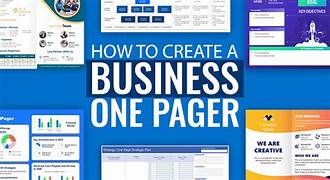Elevator Pitch
What we’ll cover
- About Elevator Pitch
- Elevator Pitch FAQs
- Elevator Pitch Checklist
What is an Elevator Pitch?
An Elevator Pitch is a brief way to explain who you are, what you do and why it is important, taking 30 to 60 seconds. It gets its name from the idea that a good pitch should be able to be delivered in the short time it takes to ride an elevator. No matter if you’re introducing a business idea, yourself or a product, you want to be noticed and remembered.
Networking events, job interviews, investor meetings and business presentations often use elevator pitches. A good pitch is easy to understand, assured and designed for the audience. It needs to focus on your unique value or solution but not get into every detail. The goal is to make people want to learn more and engage in a meaningful talk.
When Can You Use An Elevator Pitch?
- Attend networking events to meet possible clients, partners or people in the industry quickly.
- Talk about your startup or business idea to potential investors to attract their interest and secure financing.
- Quickly express what you can do, what you have done and the value you bring to the company.
- Talk about your product or service to people who might be interested to spark a conversation.
About Elevator Pitch
Grab attention quickly and make a lasting impression—learn how a sharp elevator pitch helps you clearly communicate your value, spark interest, and open new doors.
How To Write An Elevator Pitch
An Elevator Pitch is a short speech you use to attract attention to your business or what you do. An elevator pitch is useful for getting funding, meeting people or finding work because it quickly explains your worth in a short time frame. When creating an elevator pitch, make sure it is clear, short and relevant. The following are important factors to consider and include:
1. Start with a Hook
Start your Elevator Pitch by using an attention-grabbing opening line. It could be a strong idea, a surprising fact or a question that links to what you are promoting. The purpose is to leave the listener eager to listen more.
2. Define Your Purpose
Make sure your business name says what you do or what your product is. Keep the language you use easy to understand and don’t use technical terms. When you’re creating a business elevator pitch, clearly state the product or service that you are offering.
3. Emphasize Your Unique Selling Point (USP)
Outline the factors that make your company different from others in the market. Perhaps the unique thing about your solution is its feature, a special skill or filling a gap in the market. This part helps your startup elevator pitch be more engaging than others.
4. Explain the Benefits
Focus on how your product, service, or skills can solve a problem or improve the listener’s situation. Instead of just listing features, emphasize tangible benefits.
5. Include a Call to Action
Always include a clear suggestion for the next action, be it a meeting, contact exchange or website visit. This gives your pitch a clear sense of where it is going and why.
6. Keep It Concise and Clear
A good elevator pitch for job interviews or business meetings should not go on for longer than 30 to 60 seconds. Don’t give too much information at once. Spend time practicing to sound natural and confident.
7. Customize for Your Audience
Modify your sales elevator pitch or elevator pitch for investors based on the audience. Investors are interested in how the company will grow, while customers want to see what benefits they will get.
8. Practice Your Delivery
Practice your pitch until it comes out smoothly and with confidence, but not in a stiff way. Make sure you pitch your business in the time given, but don’t rush through it.
If you complete these steps, your business elevator pitch or startup elevator pitch will be impressive. Your goal is to craft a short and effective message that tells your listener what makes you different and motivates them to act. At a networking event or an interview, a strong elevator pitch can help you discover new chances.
Elevator Pitch FAQs
Elevator Pitch Checklist
1. Create Your Pitch
Begin by drafting the elevator pitch’s core elements: its value proposition, target audience, the problem it addresses, and its solution. Ideally, you should start writing your pitch immediately so it can be revisited at a later time for refinements.
2. Review Your Pitch Carefully
Look at the pitch and check for a catchy hook, clear messaging and concise language. Highlight the key benefits your business or idea presents and anticipate some questions of your own. Try delivering it to ensure it will be understood and engage people.
3. Deliver the Pitch with Confidence
The elevator pitch should always be rehearsed and ready to go. Speak confidently, keep briefly within 30-60 seconds, and make it audience-oriented. Depending on the setting, the tone and emphasis may be varied.
4. Share Your Pitch and Request Feedback
Once given, present your elevator pitch to mentors, colleagues, or potential investors and seek constructive feedback. Retain copies of your pitch script or slides for quick references and continuous revision.
5. Keep Your Pitch Updated
Regularly update your elevator pitch due to changes in your business or market needs. Keep your message relevant by refining your value proposition and including the latest milestones or achievements.
Start Your Elevator Pitch Today with Draaft
All Your Legal Needs, Handled in One Powerful Platform
✔ Effortlessly create, personalize, and share all legal & HR documents
✔ Stay protected with automatic coverage through Document Defense
✔ Unlock exclusive savings on business and legal services
✔ Get peace of mind with on-demand access to professional legal guidance
Create confidently. Protect what matters. Get started with Draaft now.
How to Make a One Pager Marketing Story That Gets Results?
People today have short attention spans. They don’t want to read long papers to understand your business. They want clear, quick answers. A One Pager Marketing Story solves this problem. So, what is it, and [...]
How to Make a Pitch Deck: A Simple Step-by-Step Guide with Templates & Examples
Do you have a great idea for a new business or product? Do you want to convince people like investors or judges at a competition to support it? You need a pitch deck! A pitch [...]
Understanding the Profit and Loss Statement: Format, Templates & Examples Explained
Do you know how businesses check if they’re making money? They use financial statements, and the profit and loss statement, also called the Income Statement, is a super important one. This report shows how much [...]
How To Create A Letter Of Intent (LOI) In Minutes? Fast & Accurate Guide
You have an important thing up ahead: perhaps your dream job, an amazing business opportunity, or a partnership that excites you. But how can you possibly put your interest into words without complicating everything? Well, [...]
How To Create An Elevator Pitch In Minutes? Fast & Accurate Guide
Ever struggled to explain what you do in a way that actually grabs attention? That is where an elevator pitch saves the day. So, what is an elevator pitch? It is your chance to [...]
How To Create One Pager (+Free Templates) In Minutes?
Ever needed to sum up an idea in just one page? That’s exactly what a one pager does. Whether it’s a project plan, business pitch, or marketing overview, a one pager design keeps things clear [...]







